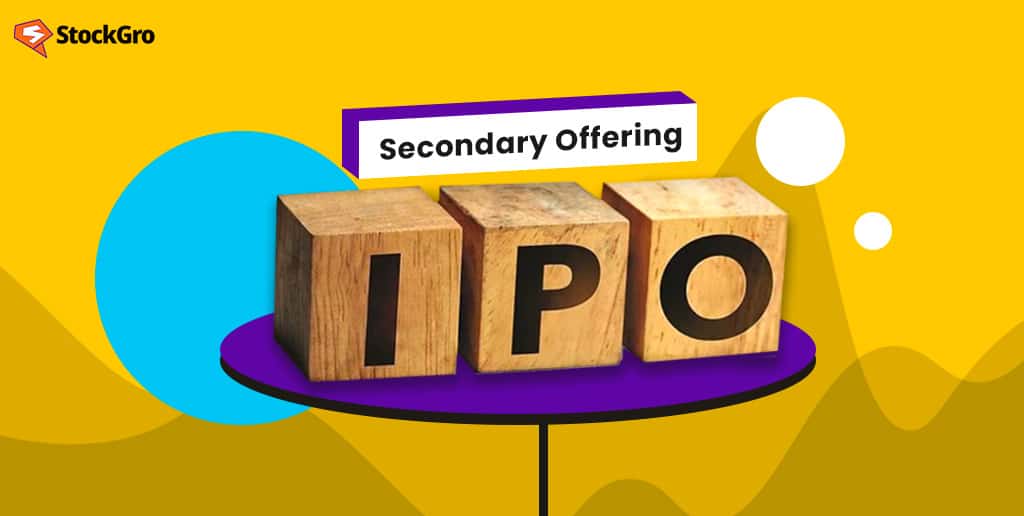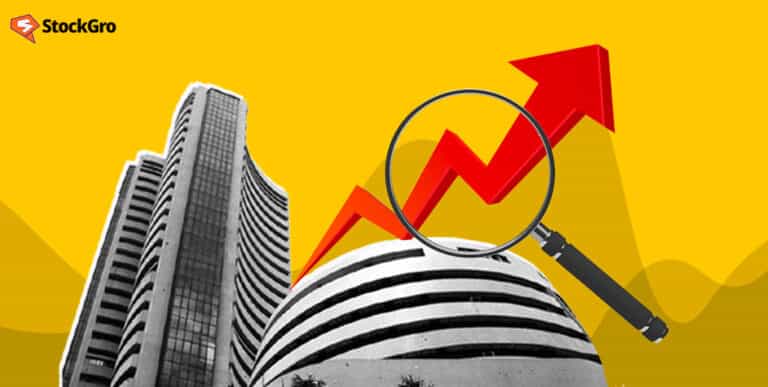
A company may need funds for various purposes, such as clearing off debts, expansion etc. Generating funds from the market through the issue of shares is one of the feasible options.
Companies have different types of share issues, and if you are not a seasoned investor, the terms used for these offerings can be overwhelming. Understanding the differences between these offerings can help an investor make good investment decisions at the right time.
What is a Secondary Offering IPO?
When a formerly private company decides to go public and raise capital for the first time in the markets through the sale of shares that will get listed on a trading exchange, it is called an IPO. Then there is a secondary offering IPO or secondary public offerings, which involves selling shares in the secondary market.
In the secondary offering IPO, secondary shares held by investors are sold in the secondary market. These shares are the same that were once sold to the public by the company during Initial Public Offering or IPO.
In an IPO, the company receives the proceeds from selling shares to the public, but since the investors are the owners of the shares sold in the secondary offering, the proceeds go to them, not the company.
Secondary offering IPO is a broad term. It also includes the issuance of additional shares by a public company that has already issued shares during an IPO. Secondary offerings in such a case are also called follow-on offerings. Let’s understand Secondary Public Offerings meaning, it’s working, and its different types.
You may also like: What is a roadshow in IPO?
Types of secondary markets
There are two types of secondary markets: over-the-counter markets and stock exchanges. In centralised markets or exchanges, securities are traded without any direct interaction between purchasers and sellers. The National Stock Exchange NSE and the Bombay Stock Exchange BSE are examples of these stock exchanges.
- Stock Exchanges
There is no direct interaction between the purchaser and the seller of securities in this kind of secondary market. Regulations have been put in place to ensure trade safety.
The buyers and sellers do not have any default risk since the exchange itself acts as a guarantee. Transaction costs on these exchanges are high due to exchange charges and commissions.
- Over-The-Counter
This kind of secondary market is decentralised, and investors trade among themselves. Different prices are charged by vendors from one another as everyone wants bigger volume sales.
This kind of secondary market poses a risk higher than that in the exchange as there is a one-to-one market for all transactions. Foreign exchange is one of the things traded in these markets.
Primary vs Secondary Offering
In India, the companies can raise capital through two methods which are classified as the primary offerings and secondary offerings. Let’s highlight the main points of their comparison:
| Primary Offering | Secondary Offering | |
| Definition | Issuance of new shares to the public for the first time, with proceeds going directly to the company. | Sale of existing shares by current shareholders (e.g., promoters, early investors) to the public. |
| Purpose | To raise fresh capital for business expansion, debt repayment, or other corporate needs. | To provide liquidity to existing shareholders; the company does not receive any proceeds. |
| Impact on Share Capital | Increases the company’s total share capital, leading to potential dilution of existing shares. | No change in the company’s total share capital; no dilution of existing shares. |
| Pricing | Determined by the company and underwriters based on market conditions and demand. | Typically aligned with current market prices, as shares are already in circulation. |
| Regulatory Requirements | Subject to stringent regulatory scrutiny, including disclosures mandated by the Securities and Exchange Board of India (SEBI). | Requires regulatory approval, but the process may be less rigorous compared to primary offerings. |
| Investor Considerations | Investors buy newly issued shares, contributing directly to the company’s capital. | Investors purchase existing shares; funds go to selling shareholders, not the company. |
How a secondary offering in an IPO works?
A company needs funds for several reasons, such as expansion, paying off debt, etc. In such cases, the company may decide to go public by issuing an IPO in the share market, where securities or shares that represent partial ownership are first sold through an initial public offering.
The shares the company offers for the first time are bought by investors at the listed price of the IPO, and the proceeds from the sale of shares go to the company. After the IPO is issued, the company becomes publicly traded, with its shares listed on the stock exchange.
Now, if the investors who have bought shares in the IPO want to sell them further, they can sell them in the secondary market where regular trading (buying and selling) of shares occurs.
But since the ownership of shares is now with the investors and not the company, the proceeds from the sale of shares will be collected by investors and not the company.
A lot of times, companies themselves offer secondary offerings in IPO by selling new shares. This is often done to finance large expenses such as R&D activities, pay off debts, etc. So in a secondary offering, investors and companies can sell the shares to interested individuals in the secondary market.
Also Read: The role of compound interest to reach your financial goals
Types of secondary offering
Secondary offerings can be classified into dilutive and non-dilutive offerings depending on the parties involved in the transactions. Let’s look at them in detail.
- Non-dilutive secondary offering
In a non-dilutive secondary offering, there is no dilution of shares as the shares being sold are the ones formerly issued in the IPO. In this case, only an exchange or trading of shares takes place.
Since no new shares are being issued, this offering does not benefit the issuing company. A non-dilutive secondary offering often occurs at the end of the lock-up period or a few years after the IPO.
- Dilutive secondary offering
It is the opposite of a non-dilutive offering and is called a Follow-on Public Offering (FPO). When the issuing company creates and offers new shares to the investors, it is a dilutive secondary offering.
In this case, the ownership of the existing shareholders gets diluted. The company’s board of directors are involved in the decision-making process of issuing new shares.
Impact of Secondary Offerings on the Market
Secondary offerings affect both the investors and the stock prices of the company. For instance, if a major shareholder sells a large number of shares in a company, inventors may take it as a bad sign for the company.
In such cases, when the company announces the secondary offering pricing, it may result in a fall in the company’s current share prices. A dilutive secondary offering can lower the stock price of the company in most cases.
A rise in stock prices after a secondary offering can be due to a positive investor reaction towards the offering. They may believe that the proceeds will be used for the company’s growth.
The company may use the funds generated through the secondary offering to pay off debts, make acquisitions, or invest in the growth plans of the company.
Also Read: All you need to know about India’s first Retail REIT – Nexus Select IPO
Why do companies go for secondary offerings or follow-on offerings?
Follow-on offerings are made by companies that have already become public through their initial public offer or IPO. Let’s see the example of Meta (formerly Facebook) in this case.
In 2013, Meta CEO Mark Zuckerberg sold almost 41 million shares of his stake to investors. Since he had sold his private stock, he received profits directly from investors, not the company. The secondary offering was made to raise funds for his taxation purposes.
In addition to the secondary offering made by Zuckerberg, Meta also issued several new shares to the public and generated profits for corporate purposes. This was a perfect example of an offer that combined both primary and secondary sales.
Conclusion
Secondary offerings allow investors and companies to generate funds by selling/issuing their shares to the public. While non-dilutive secondary offerings may not affect the stock price per se, they can make the investors doubt the company.
Dilutive offerings, on the other hand, can bring down the stock price because the value of the stock gets diluted for the existing investors. Investors should be aware of the risks and rewards of secondary offerings before investing.
FAQs
How does a secondary offering impact existing shareholders?
A dilutive secondary offering increases the total number of shares, potentially reducing existing shareholders’ ownership percentage and earnings per share. However, it can also fund company growth.
Are secondary offerings a good investment opportunity?
Secondary offerings may offer opportunities for investment, although the degree of advantage may depend on variables such as the potential for growth of the company or the objectives for which the offering is made. Investors should evaluate each case separately.
What are the potential risks of investing in a secondary offering?
Risks include potential share dilution, market perception of the company’s financial health, and possible stock price volatility following the offering. Thorough due diligence is essential.
What are the reasons a company may conduct a secondary offering?
Companies may conduct secondary offerings to raise capital for expansion, debt repayment, or other operational needs. Understanding the specific reason helps evaluate the investment’s prudence.

